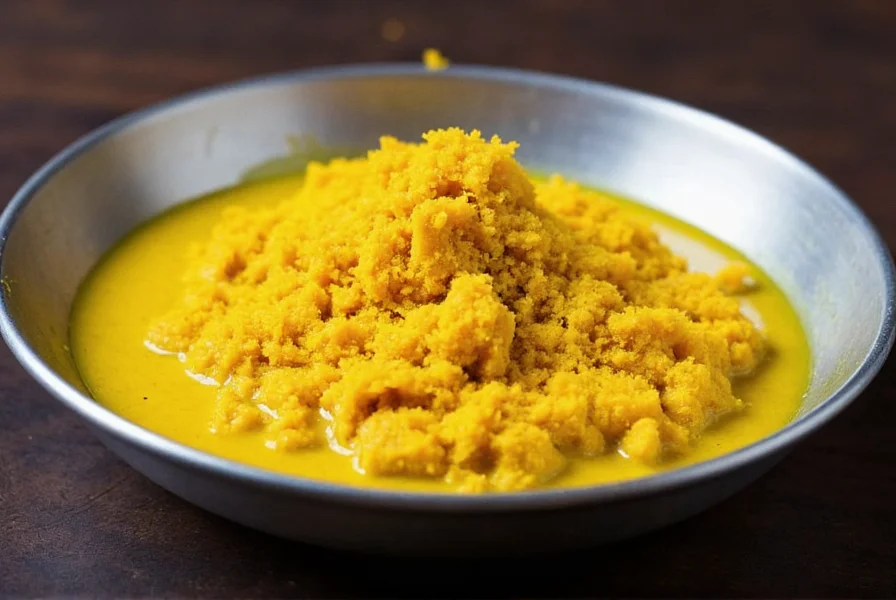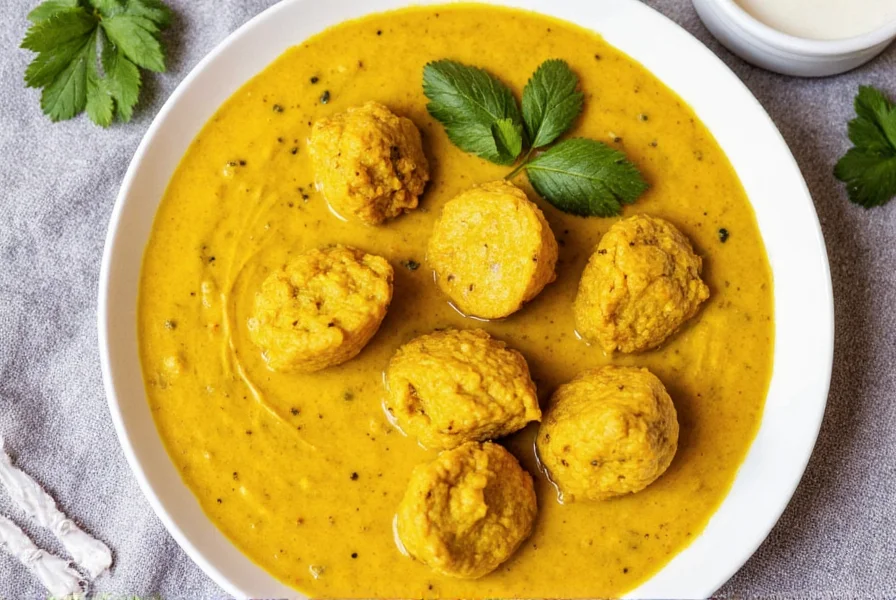The Culinary Power of Turmeric in Everyday Cooking
Turmeric, that vibrant golden spice, transforms ordinary meals into extraordinary culinary experiences. Beyond its striking color, turmeric brings a warm, earthy flavor that complements both savory and sweet dishes. Chefs and home cooks worldwide have embraced this ancient spice not just for its visual appeal but for how it elevates entire flavor profiles when used thoughtfully.
Understanding turmeric's behavior in cooking makes all the difference. The active compound curcumin provides both color and potential health benefits, but it's fat-soluble and better absorbed when paired with black pepper. This scientific insight directly translates to better tasting dishes—combine turmeric with olive oil or coconut milk and a pinch of black pepper for maximum flavor impact and bioavailability.
Mastering Turmeric: Forms and Flavor Profiles
Turmeric appears in two primary forms in kitchens: fresh root and dried powder. Each offers distinct advantages for different turmeric food recipes.
| Form | Best For | Flavor Intensity | Storage Tips |
|---|---|---|---|
| Fresh Turmeric Root | Smoothies, juices, pickling | Milder, citrusy notes | Refrigerate up to 3 weeks |
| Ground Turmeric | Curries, rice dishes, baked goods | More concentrated, earthy | Airtight container, 6-12 months |
Fresh turmeric root delivers a brighter, slightly peppery flavor that works beautifully in raw applications like smoothies or salad dressings. Simply peel, grate, and incorporate. Powdered turmeric provides more consistent color and stronger earthy notes ideal for cooked dishes. When substituting between forms, remember that 1 teaspoon of ground turmeric equals approximately 1 inch of fresh root.

5 Exceptional Turmeric Food Recipes for Home Cooks
Golden Turmeric Milk (Traditional Recipe)
This comforting beverage represents one of the most popular turmeric recipes worldwide. Heat 1 cup of your preferred milk (dairy or plant-based) with 1 teaspoon turmeric, ½ teaspoon cinnamon, a pinch of black pepper, and 1 teaspoon honey. Whisk gently until warm but not boiling. For enhanced flavor, add a small piece of fresh ginger while heating, then strain before serving. This golden milk recipe creates a soothing evening drink that showcases turmeric's earthy warmth balanced by sweet and spicy notes.
Turmeric Roasted Vegetable Medley
Transform ordinary vegetables into a vibrant side dish with this simple turmeric vegetable recipe. Toss 4 cups of chopped vegetables (sweet potatoes, cauliflower, and carrots work exceptionally well) with 2 tablespoons olive oil, 1½ teaspoons turmeric, 1 teaspoon cumin, salt, and freshly cracked black pepper. Roast at 400°F (200°C) for 25-30 minutes until caramelized. The high heat unlocks turmeric's full flavor potential while the black pepper enhances curcumin absorption. Finish with a squeeze of fresh lemon juice to brighten the earthy notes.
Coconut Turmeric Rice Pilaf
Elevate basic rice into an aromatic accompaniment with this turmeric rice recipe. Sauté 1 teaspoon turmeric and ½ teaspoon ginger in coconut oil before adding 1 cup rinsed basmati rice. Toast for 1-2 minutes, then add 1¾ cups coconut milk and water mixture. Bring to boil, cover, and simmer for 15 minutes. Let rest 5 minutes before fluffing. The coconut milk creates a creamy texture while turmeric infuses the grains with golden color and subtle earthiness. This turmeric coconut rice pairs perfectly with grilled proteins or curries.
Simple Turmeric Chicken Curry
This approachable turmeric curry recipe delivers restaurant-quality flavor with minimal effort. Brown 1½ pounds chicken pieces, then remove from pan. Sauté 1 chopped onion until translucent, add 2 tablespoons tomato paste, 2 teaspoons turmeric, 1 teaspoon coriander, and ½ teaspoon cayenne. Return chicken to pan, add 1 cup coconut milk, and simmer 20 minutes. The turmeric creates a beautiful golden sauce while complementing the chicken's natural flavor. Serve over the coconut turmeric rice for a complete meal that showcases authentic turmeric cooking techniques.

Anti-Inflammatory Turmeric Smoothie
Start your day with this nutrient-packed turmeric smoothie recipe. Blend 1 cup almond milk, ½ banana, ½ cup frozen mango, 1 teaspoon turmeric, ¼ teaspoon black pepper, 1 tablespoon chia seeds, and 1 teaspoon flaxseed oil until smooth. The tropical fruits balance turmeric's earthiness while the flaxseed oil provides the necessary fat for optimal curcumin absorption. This vibrant yellow smoothie offers a refreshing way to incorporate turmeric into your morning routine without overwhelming flavor.
Professional Tips for Perfect Turmeric Dishes Every Time
Seasoned chefs know specific techniques that maximize turmeric's potential in recipes. First, always bloom ground turmeric in oil or fat for 30-60 seconds before adding other ingredients. This simple step dramatically enhances both flavor and color dispersion. Second, balance turmeric's earthiness with acidic components—lemon juice, vinegar, or tomatoes work exceptionally well in turmeric food recipes.
Prevent staining by wearing gloves when handling fresh turmeric and cleaning cutting boards immediately with soapy water. For persistent stains, rub with lemon juice before washing. When measuring ground turmeric, use a dedicated spoon as the pigment transfers easily to other spices. Remember that turmeric's color intensifies over time, so start with less than you think you need—you can always add more.
Understanding Turmeric's Health Properties in Context
While turmeric features prominently in traditional medicine systems, modern research provides valuable context for home cooks. Scientific studies suggest that curcumin, turmeric's active compound, shows promise for supporting inflammation management when consumed regularly as part of a balanced diet. However, the concentration in culinary applications remains significantly lower than therapeutic supplements.
For maximum benefit from turmeric food recipes, combine the spice with black pepper (which contains piperine) and healthy fats. This combination increases curcumin absorption by up to 2,000% according to some research. Realistically, incorporating turmeric into your regular cooking routine contributes to overall dietary diversity rather than serving as a standalone solution. View turmeric as one valuable component in a varied, whole-foods approach to eating.
Conclusion: Embracing Turmeric in Your Culinary Repertoire
Turmeric food recipes offer a delicious gateway to more vibrant, flavorful cooking. By understanding how to properly incorporate this golden spice—balancing its earthiness, maximizing color, and enhancing absorption—you'll create dishes that delight both the eyes and palate. Start with the simple recipes outlined here, experiment with proportions, and soon you'll develop an intuitive sense for when and how much turmeric elevates your favorite dishes. The journey with turmeric extends beyond trending superfood status to becoming a trusted kitchen companion that adds both beauty and depth to everyday meals.
What's the best way to prevent turmeric from staining kitchen surfaces?
Immediately clean surfaces with soapy water after contact with turmeric. For stubborn stains, rub lemon juice or white vinegar on the affected area before washing. When working with fresh turmeric root, wear disposable gloves to prevent skin staining. Always use glass or stainless steel containers rather than plastic, which can retain turmeric pigments.
How can I enhance the flavor of turmeric in my recipes?
Bloom ground turmeric in oil or fat for 30-60 seconds before adding other ingredients to unlock its full flavor potential. Balance turmeric's earthiness with citrus elements like lemon or lime juice. Pair with complementary spices such as cumin, coriander, or ginger. Always include a pinch of black pepper not only for flavor but to enhance curcumin absorption.
Can I substitute fresh turmeric for powdered in recipes?
Yes, you can substitute fresh turmeric for powdered at a ratio of 1 inch fresh root to ½ teaspoon powder. Fresh turmeric offers a brighter, slightly peppery flavor ideal for raw applications like smoothies, while powdered turmeric provides more consistent color and stronger earthy notes for cooked dishes. When substituting, adjust quantities based on your taste preferences as fresh turmeric has a milder flavor profile.
How should I store turmeric to maintain freshness?
Store ground turmeric in an airtight container away from light and heat, where it will maintain optimal flavor for 6-12 months. Fresh turmeric root keeps best when refrigerated in a paper bag or wrapped in a paper towel inside a sealed container for up to 3 weeks. For longer storage, freeze fresh turmeric root (peeled or unpeeled) for up to 6 months—simply grate frozen root directly into recipes without thawing.
Why do most turmeric recipes include black pepper?
Black pepper contains piperine, which significantly enhances the absorption of curcumin (turmeric's active compound) by up to 2,000% according to research. This scientific synergy means your body can utilize more of turmeric's beneficial compounds. From a flavor perspective, black pepper also complements turmeric's earthiness, creating a more complex and balanced taste profile in turmeric food recipes.











 浙公网安备
33010002000092号
浙公网安备
33010002000092号 浙B2-20120091-4
浙B2-20120091-4